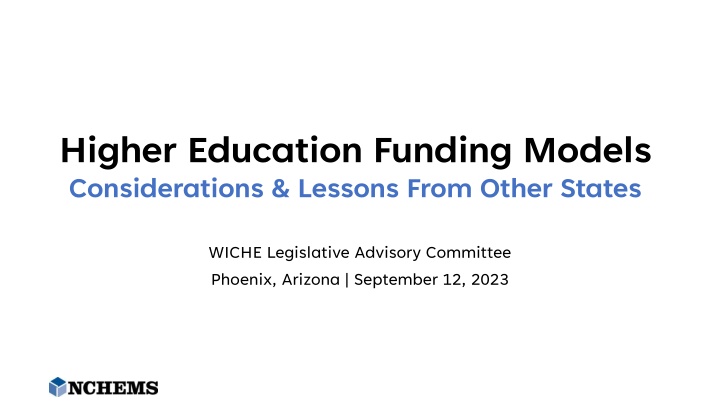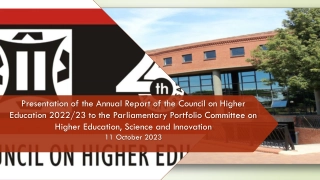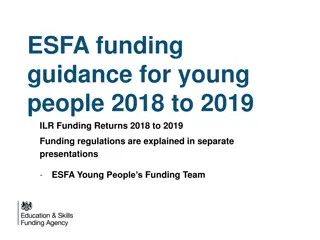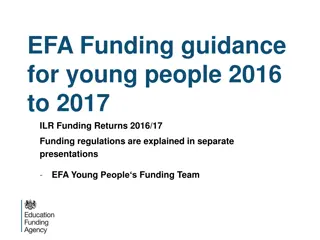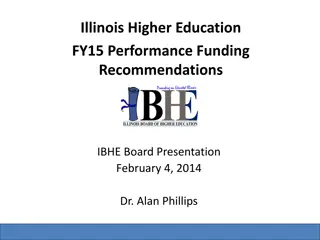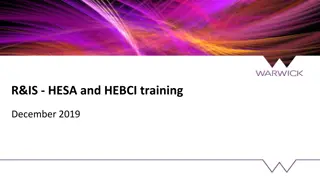Lessons in Higher Education Funding Models
Dive into considerations and recent reform efforts in higher education funding from states like Colorado, Florida, and more. Explore the key principles, priorities, and observations in funding models to enhance institutional adequacy.
Download Presentation

Please find below an Image/Link to download the presentation.
The content on the website is provided AS IS for your information and personal use only. It may not be sold, licensed, or shared on other websites without obtaining consent from the author.If you encounter any issues during the download, it is possible that the publisher has removed the file from their server.
You are allowed to download the files provided on this website for personal or commercial use, subject to the condition that they are used lawfully. All files are the property of their respective owners.
The content on the website is provided AS IS for your information and personal use only. It may not be sold, licensed, or shared on other websites without obtaining consent from the author.
E N D
Presentation Transcript
Higher Education Funding Models Considerations & Lessons From Other States WICHE Legislative Advisory Committee Phoenix, Arizona | September 12, 2023
Some Recent Reform Efforts State Colorado Florida Illinois Indiana Missouri Oregon Pennsylvania Texas Virginia Sector Statewide Separate Reviews Four-Year Institutions Four-Year Institutions Statewide Separate Processes for Four- and Two-Year Institutions PASSHE Two-Year Institutions Statewide
Linking Costs, State Priorities, and Funding Preserving the value of an institution as a state asset Recognizing variation in fixed and variable costs Aligning state goals with a rational funding strategy that has three critical elements 1. Differentiated roles 2. Predictability & sustainability 3. Improvement Serving current students effectively AND serving more and different students better Variation in capacity to generate revenue
Priorities / Principles Predictability and transparency Capacity and responsiveness what gets funded and how? Performance Adequacy first Incentives for improvement and excellence Unintended consequences Funding for mission differences, local needs Collaboration
Institutional Adequacy Conceptual Framework Missouri & Virginia Expenditure Type Category Funding Responsibility Non-Instructional Mission-Related Activities and Other Activities External Funders & Self-Support Mix (State/Local, Tuition, & External Funders) Capacity Building State Performance Funding Model Variable Costs Mix (State/Local & Tuition) Fixed Costs State/Local 5
Observations from Missouri & Virginia Fidelity to the conceptual framework and measurement precision are difficult to balance Defining the appropriate (aggregate) mix of tuition revenue and state appropriations to cover costs A cost- and equity-focused funding model makes per-student funding levels inappropriate as a metric for equitable state support
Adequate/Equitable Funding Depends on Who Is Served (Audiences) With What (Programs) Institution Exurbs Total Cost Estimates Total Funding Requirements per FTE $24,518,842 $8,606 Big City 1 $107,680,980 $7,320 Rural $23,111,866 $7,802 Deep Rural $40,113,579 $6,659 Rural Trades Focused $16,949,358 $8,567 Large Comprehensive $98,855,129 $8,001 Big City 2 $112,780,246 $6,396 Suburban $49,719,238 $7,057 Spread Out $35,010,152 $7,950 Rural Poor $25,290,804 $8,010 Tech First $40,062,062 $10,521
Process Questions What are current shortcomings that need to be addressed? What are current strengths? Would having legislation compelling a study be valuable? What does the modeling strategy look like? Who is in the advisory group? What is the broader stakeholder outreach/engagement strategy? What gets done internally vs. outsourced? What data are necessary? (And who has them?) What is a realistic timeline?
